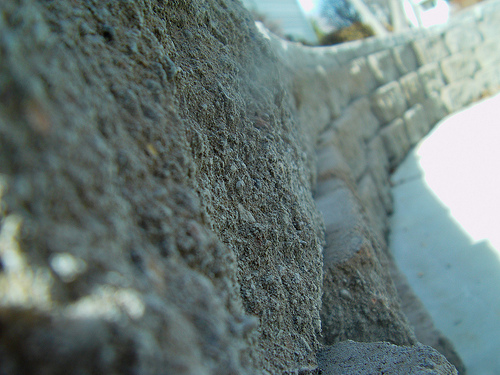By Kenneth Muir (Contributor) – Email
Print Edition: March 21, 2012
Marathon runners often talk about a condition known as “hitting the wall” in which, while running, it becomes significantly harder to maintain your speed and effort level. The 2007 movie Run Fatboy Run showed a literal interpretation of this phenomenon. The concept has always intrigued me; I’ve taken part in many endurance events in my lifetime, lasting two hours or more, but never encountered a specific “wall hitting” moment in which my fatigue significantly increased. So, I set out to discover what exactly causes this condition.
Hitting the wall basically means your glycogen stores have been depleted, and your body becomes forced to rely solely on fat reserves. The breakdown of glycogen into glucose, and glucose into adenosine-triphosphate (ATP), is the primary pathway and source of fuel for the body when it’s working at a high intensity. Fat molecules are generally more difficult for the body to break down into glucose and therefore ATP, but this process is easier for the body to implement when it’s working at lower intensities and still has a supply of glycogen left. This is the reason why the “fat burning zone” when exercising is always at lower intensities, or at approximately 60 per cent of your maximal effort: at this effort level your body will more readily break down fat molecules. Theoretically, hitting the wall is another way of reaching the fat burning zone, because your body has little else to burn at that point. However, I’d personally advise against that route, as hitting the wall is quite hard on your body, and is simply much more difficult to achieve in practice than exercising at lower intensities.
The side effects of hitting the wall are, not coincidentally, very similar to the symptoms of hypoglycemia, such as dizziness, fatigue, headache, poor judgment and a lack of coordination. Interestingly, resting does little in the way of relieving these symptoms. The only cure is a restoration of your glycogen stores. In layman’s terms, eat something. There are numerous ways, however, of avoiding hitting the wall in the first place.
Don’t exercise at high intensity for long periods
This is kind of a lame way to avoid crashing, but it is guaranteed to work. Don’t want to hit the wall? Just don’t put yourself in a position to hit the wall. This means not working at high intensity levels continuously for more than an hour or so. Essentially you can avoid the wall by either exercising for shorter periods of time, and/or lowering your intensity level to one in which more fat is used as fuel. This information isn’t exactly helpful (or encouraging) if you’re planning on running a marathon though.
Eat something while exercising
I’ve heard varying recommendations from different fitness professionals, but it is a good rule of thumb to eat something during your exercise if you plan on working out continuously for more than 40 minutes at high intensity. You can avoid hitting the wall by replenishing your glycogen/glucose levels as you go along by eating or drinking something every 15-30 minutes. It’s worth mentioning that you should definitely be drinking something; as I discussed two weeks ago, dehydration has its own host of debilitating effects. Take small sips of liquid as often as possible.
Carb-Loading
This is probably the most effective way to avoid hitting the wall if you’re unable to eat something every once in a while during exercise, or if you simply don’t want to go through the hassle. There are several often debated ways to carb-load. The first and probably most well-known is to significantly decrease the amount of carbohydrates you consume in a day several days before the planned workout or competition, and then on the last day before the competition, eat meals that are almost completely comprised of carbs, such as pasta. The logic there is to increase your body’s “hunger” for carbs, causing it to absorb and store way more glycogen than normally would, which in turn increases the amount of time you have before those stores run out. A softer approach to carb-loading is to simply eat many more carbs on the day before competition without having to leave them out of your diet the few days beforehand. A third way to carb-load calls for a short, high-intensity workout followed by an increase in carbohydrates the day before a competition. Studies conducted by the University of Western Australia found that this method increased athletes’ glycogen stores by as much as 90 per cent.
In short, the reason I’ve never really experienced hitting the wall is that I always carb-load before long endurance events, or before any event in which I have to compete at during numerous times throughout the day. Mystery solved! Hopefully, armed with this information, you’ll never have to experience hitting the wall either.


